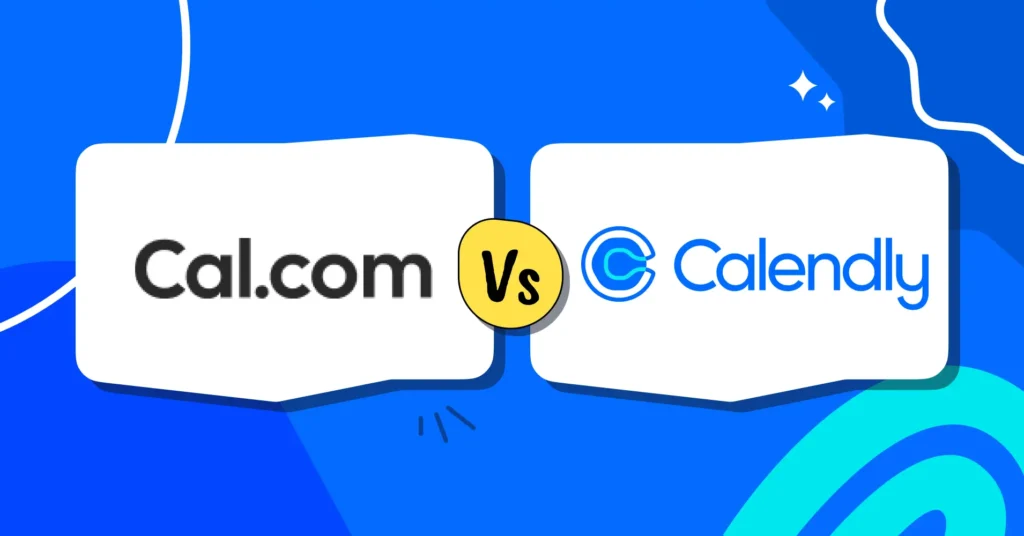
How to Conduct Impactful Planning Meetings That Drive Results?
Can you imagine what would happen if a builder started construction without blueprints? The building would turn into an unstable, unsafe structure, likely to collapse. Similarly, without planning, your business can’t stand strong.
Planning meetings are the blueprints for your projects, ensuring everything is in place and progress is smooth, guiding you toward success. Mastering them can make your team discussions more productive and give your team members a clear sense of direction.
This article explains what planning meetings are and discusses tips to make the most out of them. Read on and by the end, you’ll be ready to lead planning meetings that inspire precision and drive progress.
What are Planning Meetings?
A planning meeting is a strategic session where team members discuss and outline the details of a new project.
Think of it as plotting your route before a road trip. The purpose? To cover the project’s objectives, budget, and deadlines, ensuring everyone knows their roles and responsibilities.
As you get done with a planning meeting, you will have a plan, a bunch of inside jokes that only your team understands (and probably shouldn’t repeat in front of HR), and the determination to conquer whatever challenges lie ahead.
Key Elements of a Good Planning Meeting
Planning a meeting isn’t just about picking a date—it’s about getting ready for success. This kind of meeting helps the team create a clear roadmap and agree on the steps needed to start the project.

Before you send planning meeting invites, consider these important key elements:
- Vision and Goals: Clearly define what you want to achieve and why it matters. This will help team members understand why the meeting is important and what they need to do.
- Core Success Drivers: Identify the most important things that need to go right for your project to succeed. These are the keys to making your project work well.
- Key Performance Indicators (KPIs): Set clear goals that everyone can measure. Keeping track of KPIs will help you know how well you’re doing and help keep everyone on track.
- Resource Allocation: Identify the resources you will need to complete your project successfully, whether it’s money, people, or tools. Be sure to use them wisely and avoid wasting them.
- Adaptability and Flexibility: Plan to change things if you need to. Stay focused on your big goals while adjusting to new situations.
- Communication Plan: Make sure everyone knows what’s going on. Keep your team informed so they can work together smoothly.
Bonus: If you are starting a new project and getting ready for sprint planning, read these tips to manage your sprint sessions effectively.
12 Best Practices to Align Team Goals with Effective Planning Meetings
Learn about the 12 best practices to help you align your team goals and run productive planning meetings:
Set Clear Objectives
Start each meeting with clear goals. Whether it’s brainstorming ideas, solving problems, or decision-making, define what you want to achieve to guide a productive planning meeting.
Stop and Think: Are you here to brainstorm the next big idea, solve world hunger, or simply decide on lunch? Setting clear goals helps everyone understand the purpose and stay focused.
Choose the Right Participants
Invite people who have the expertise needed to achieve the meeting goals. This will result in diverse perspectives without overwhelming attendance, making sure each person adds value.
Who’s got the expertise, the experience, and maybe even the enthusiasm to get you where you need to go? Keep this question in mind and include key players and decision-makers who can ensure a wide range of perspectives and effective solutions.
With appointment booking tools like FluentBooking, you can handpick team members for your meetings so that the right people can add value to your meetings.

Plus, you can set a participant limit for your planning sessions.

This means you’ll fill the space with only the people that matter!
Create a Planning Meeting Agenda
Plan out what you’ll discuss, how long each topic will take, and what outcomes you expect. A planning meeting agenda can help participants prioritize discussions, prepare relevant information, and maintain focus throughout the meeting.

Think of it as the roadmap to project success. Share it with your team beforehand so everyone can come prepared with their own snacks and ideas.
Be Punctual and Professional
Is there anything worse than waiting for a meeting to start while your coffee gets cold?
Starting on time is important as it keeps things running smoothly and shows you value everyone’s time. This will also set a positive example of professionalism and promote the importance of time management within the organization.
Send Meeting Reminders
To avoid any “oops, I forgot about the meeting!” moments, consider sending your reminder a couple of hours before the meeting starts.
Appointment management tools like FluentBooking can help you send meeting reminders with details about the meeting agenda, preparation needed, and any specific instructions to ensure you never miss your project planning meetings.

Sending reminder emails can help all team members be ready and focused, minimizing last-minute confusion and maximizing productivity during the meeting.
Here are some reminder email/SMS template examples to take some inspiration!
Encourage Participation
Make sure everyone has a chance to speak up and share their ideas. Whether it’s the introverted team member or the one who never stops talking, encouraging open discussion helps uncover hidden gems and build team spirit.
Participation of all your important team members can turn this meeting into a problem-solving session where each member shares their ideas that result in impactful decisions.
Check out these meeting topics to discuss in your planning sessions!
Use Project Planning Tools
Getting a meeting started is just the start. To really make them more meaningful, you’ll need to create plenty of engaging visuals. Utilize visual planning tools such as FluentBoards to help everyone understand better and participate more actively.
Remember, sometimes a visual representation really is worth a thousand words—especially when explaining a new project timeline and upcoming tasks.
Clarify Responsibilities
Define who will do what after the meeting so everyone knows their tasks. This will ensure that tasks get done and decisions are followed through effectively. Assign clear action items, specify deadlines, and clarify roles to maintain accountability and drive progress post-meeting.
Take Good Meeting Notes
Assign someone to take detailed notes on key points, decisions, and tasks during the meeting. Share these notes quickly with everyone to make sure they know what was discussed and agreed upon.
Let’s be honest—relying on memory can be tricky, but good notes help keep everyone on track and in sync.
Plan Follow-Up Meetings
Schedule regular check-ins to review progress, discuss any issues, and adjust plans as needed. This keeps things moving forward and helps meet goals on time.
Set clear timelines for follow-up meetings or updates to maintain momentum and track progress toward achieving your objectives.
Be Clear About Expectations
Explain the meeting goals, what everyone needs to prepare, and what will be discussed. This reduces confusion and makes meetings more productive.
Clearly communicate what you expect from everyone, including their contributions, the desired outcomes, and any preparations needed. This ensures all participants are well-prepared and on the same page.
Keep Improving
Ask for feedback after your planning meetings to see what worked well and what could be better. Use this feedback to make future meetings even more effective and successful.
Regular feedback helps improve meetings, make participants satisfied, and get better results over time.
Keep in mind: It’s all about continuous progress. Try to make meetings not just bearable, but actually productive and maybe even a little fun!
What are the Benefits of a Planning Meeting?
Strategic planning meetings can make a big difference in how smoothly your organization runs. Here’s how:
Better Teamwork Across Departments: Planning meetings bring leaders from different parts of the organization together, even if they work worldwide, encouraging them to share ideas and expertise.
Efficient Use of Resources: Careful planning helps you figure out what resources you will need to reach your goals. By wisely allocating budget and personnel, you can avoid wasting your resources by using them efficiently.
Continuous Improvement: Strategic planning meetings are an ongoing process that involves regular check-ins and updates. This flexibility helps the organization adapt to changes while staying focused on long-term goals.
Building Team Morale: These meetings also help in building team spirit. When everyone gets together to brainstorm and plan, it can be a fun and motivating experience. Plus, you get to bond over shared goals and maybe even a few inside jokes!
Increased Accountability: Strategic planning meetings create a sense of responsibility among team members by clearly defining roles and expectations. This accountability ensures everyone knows their tasks and is responsible for achieving goals.
Arrange a Planning Meeting That Truly Counts!
In all honesty —poorly planned meetings lead to problems like having to redo work, spending more money than planned, and not meeting deadlines. They’re the last thing a team needs. That’s why hosting a well-thought-out planning meeting isn’t just important, it’s crucial.
Follow and implement the best practices and you will see how ideas flow freely, problems get solved, and everyone leaves with a clear plan of action.
Meetings happen every day. Make yours count!
Maisha Abedin
Hey, it’s Maisha! I enjoy crafting stories and producing content that adds value to readers. Outside of work, you will either find me capturing the beauty in the mundane or daydreaming about the perfect lasagna!
Table of Content
Subscribe To Get
WordPress Guides, Tips, and Tutorials











Leave a Reply